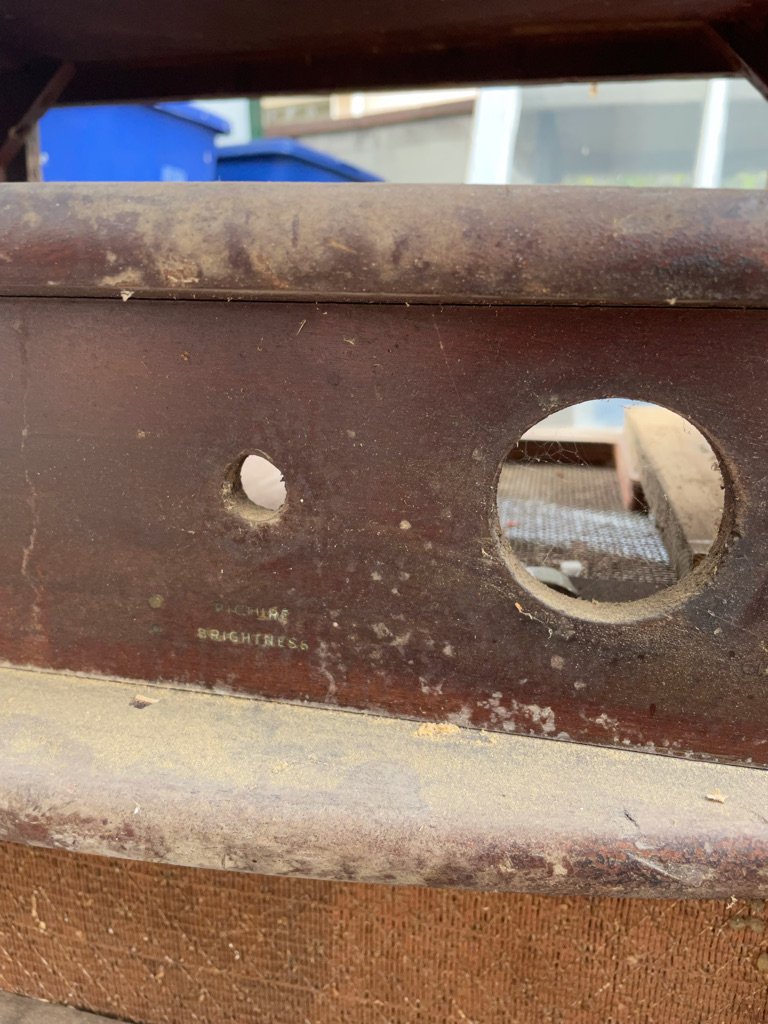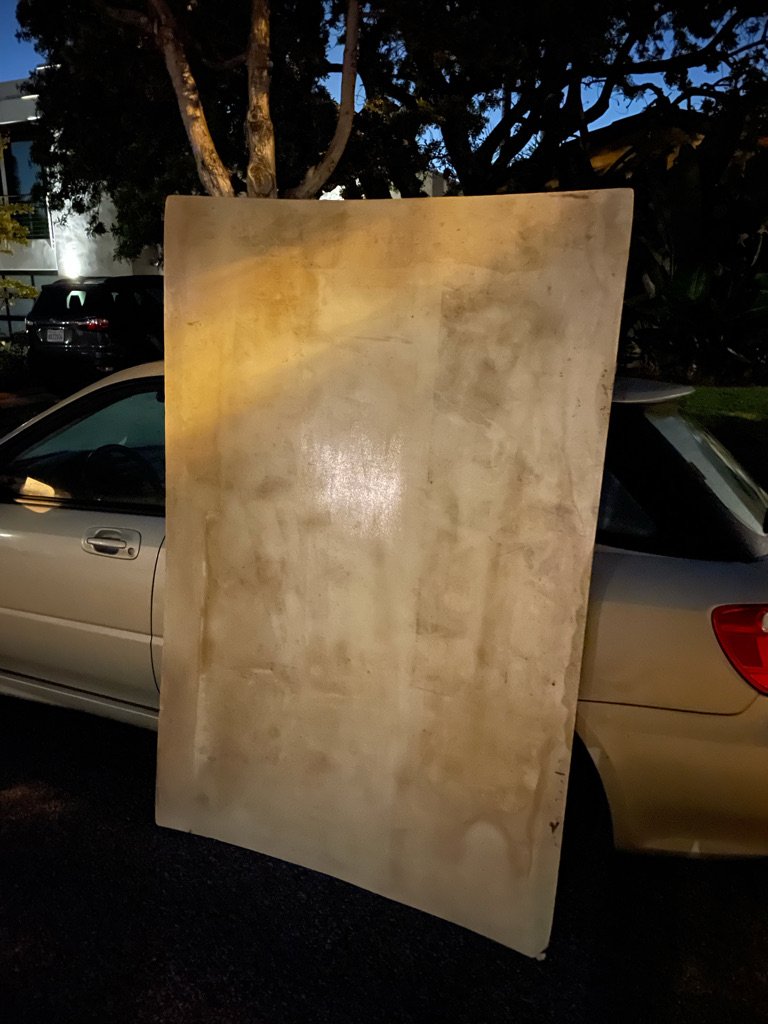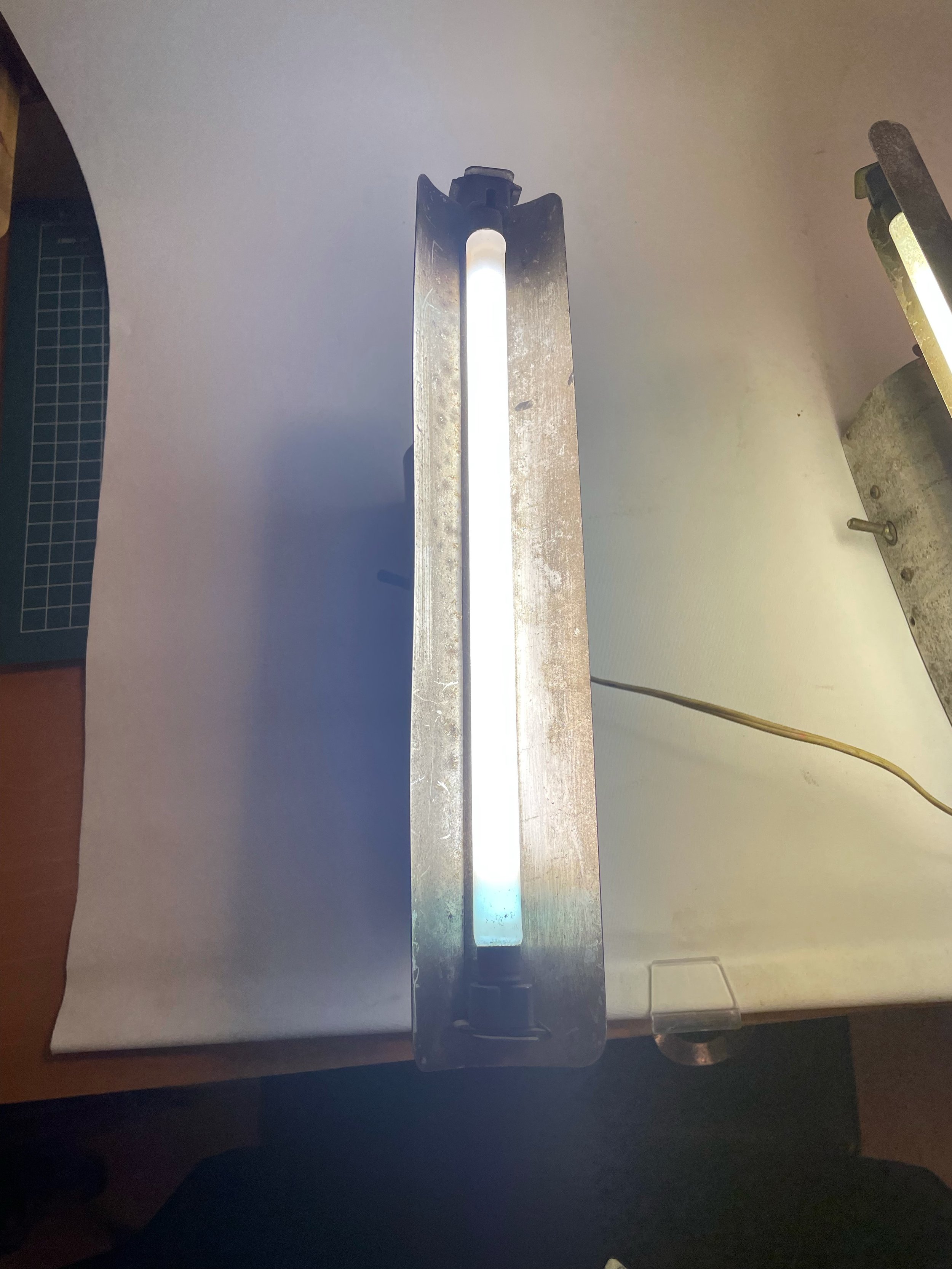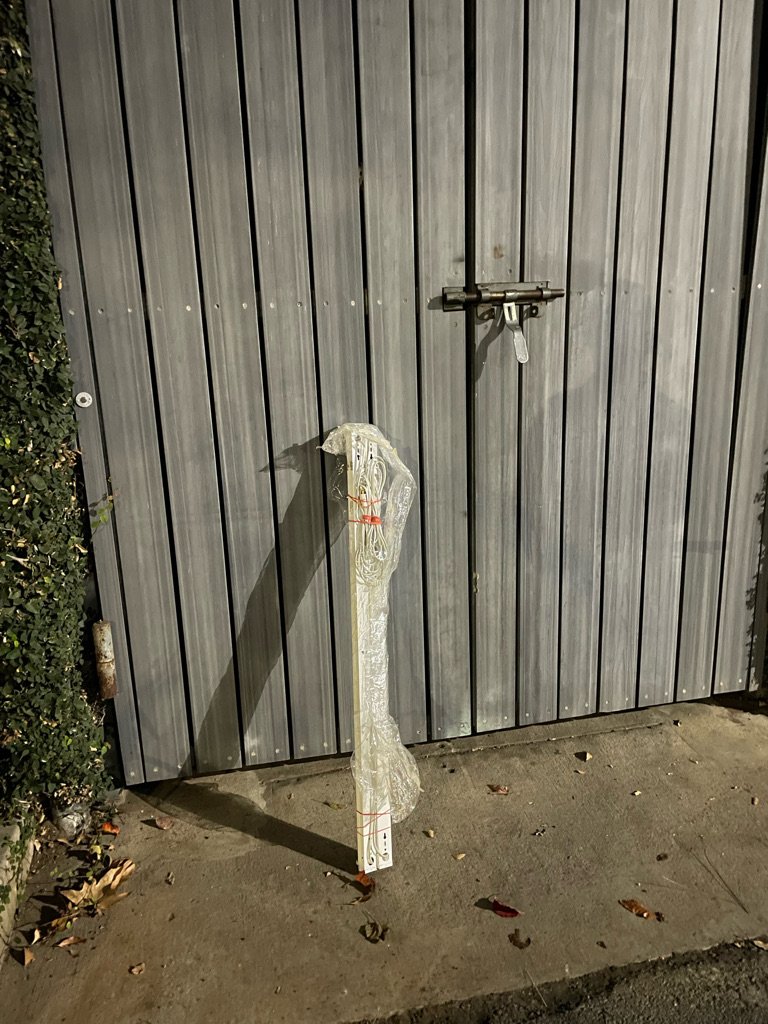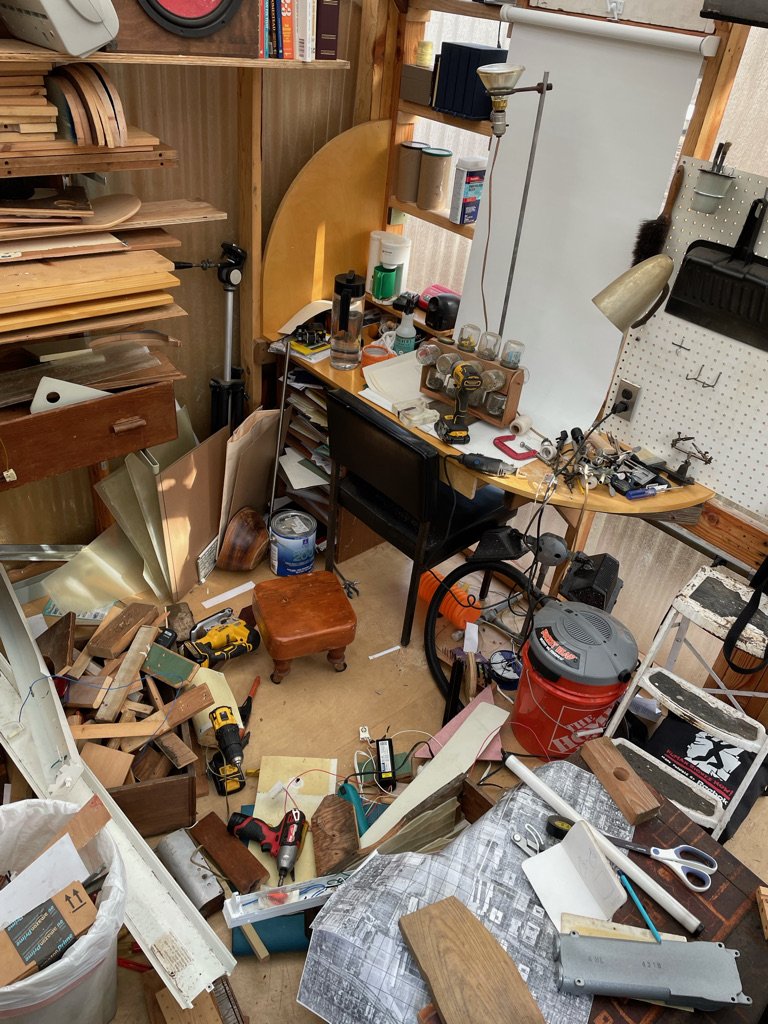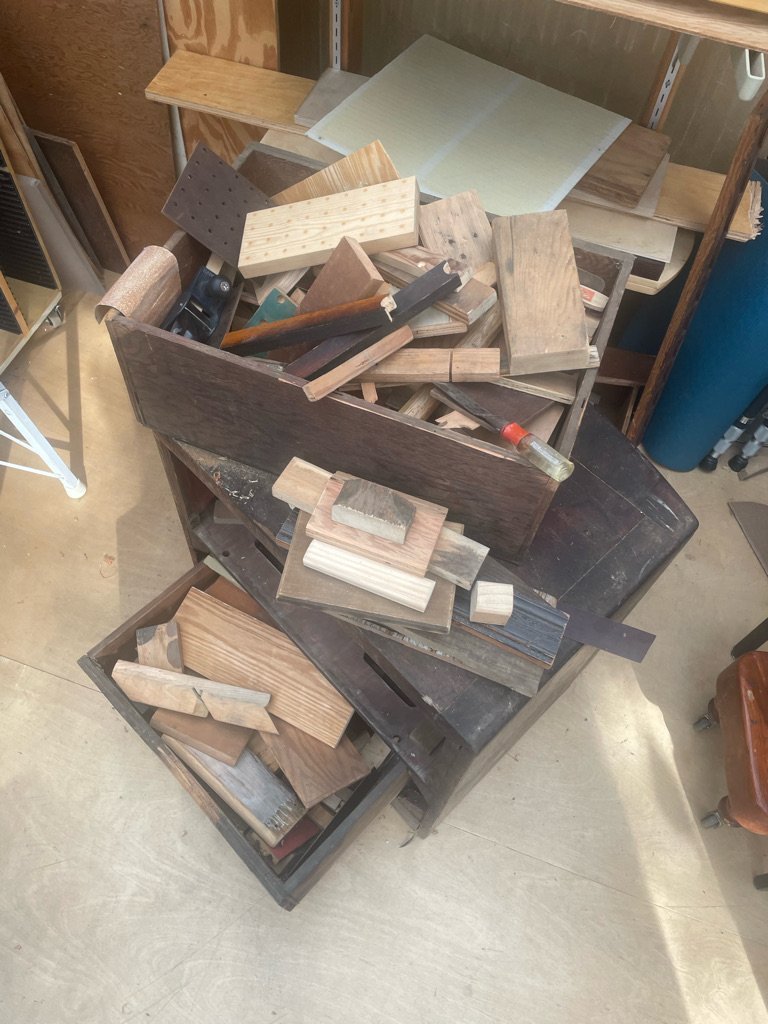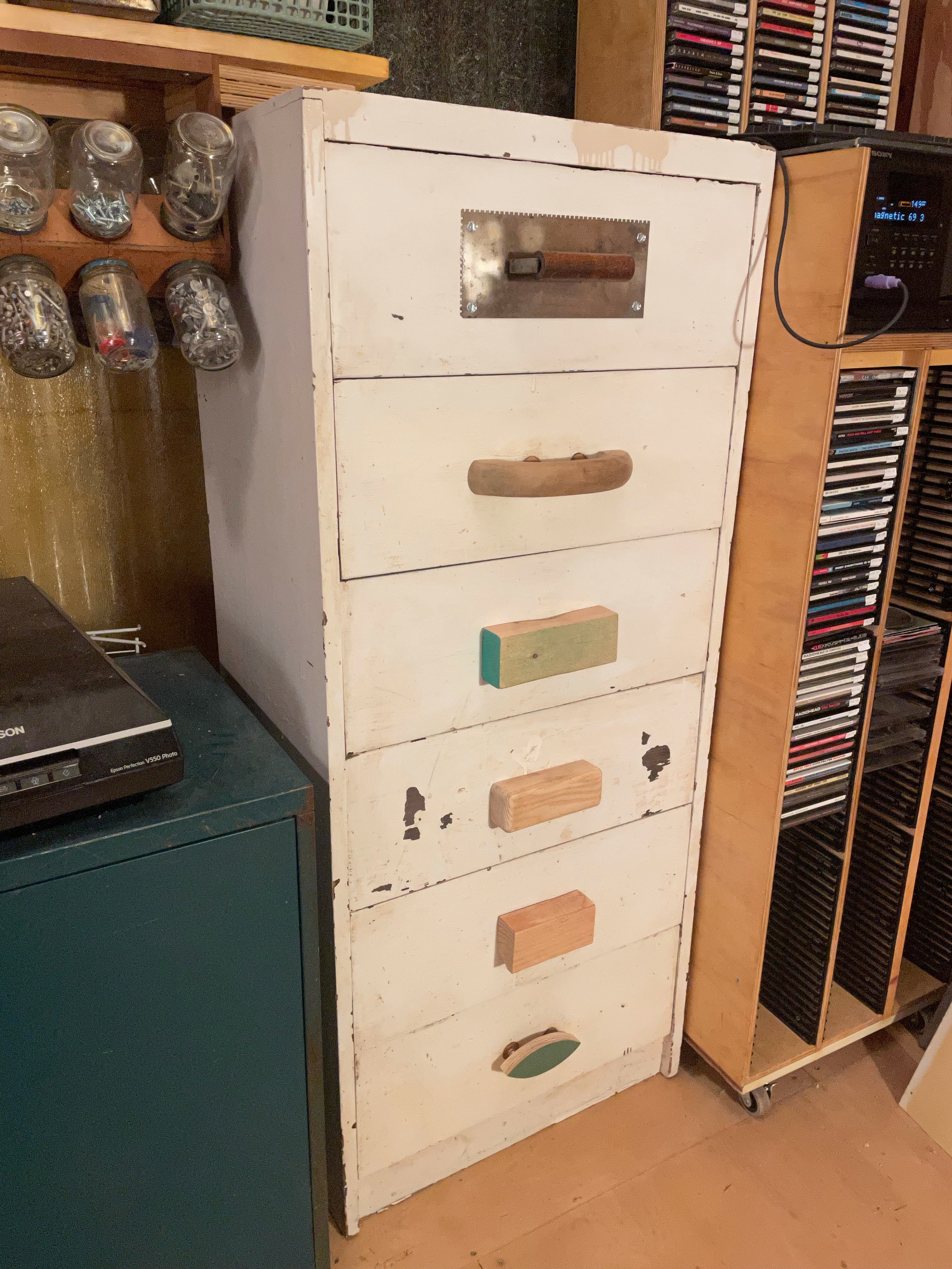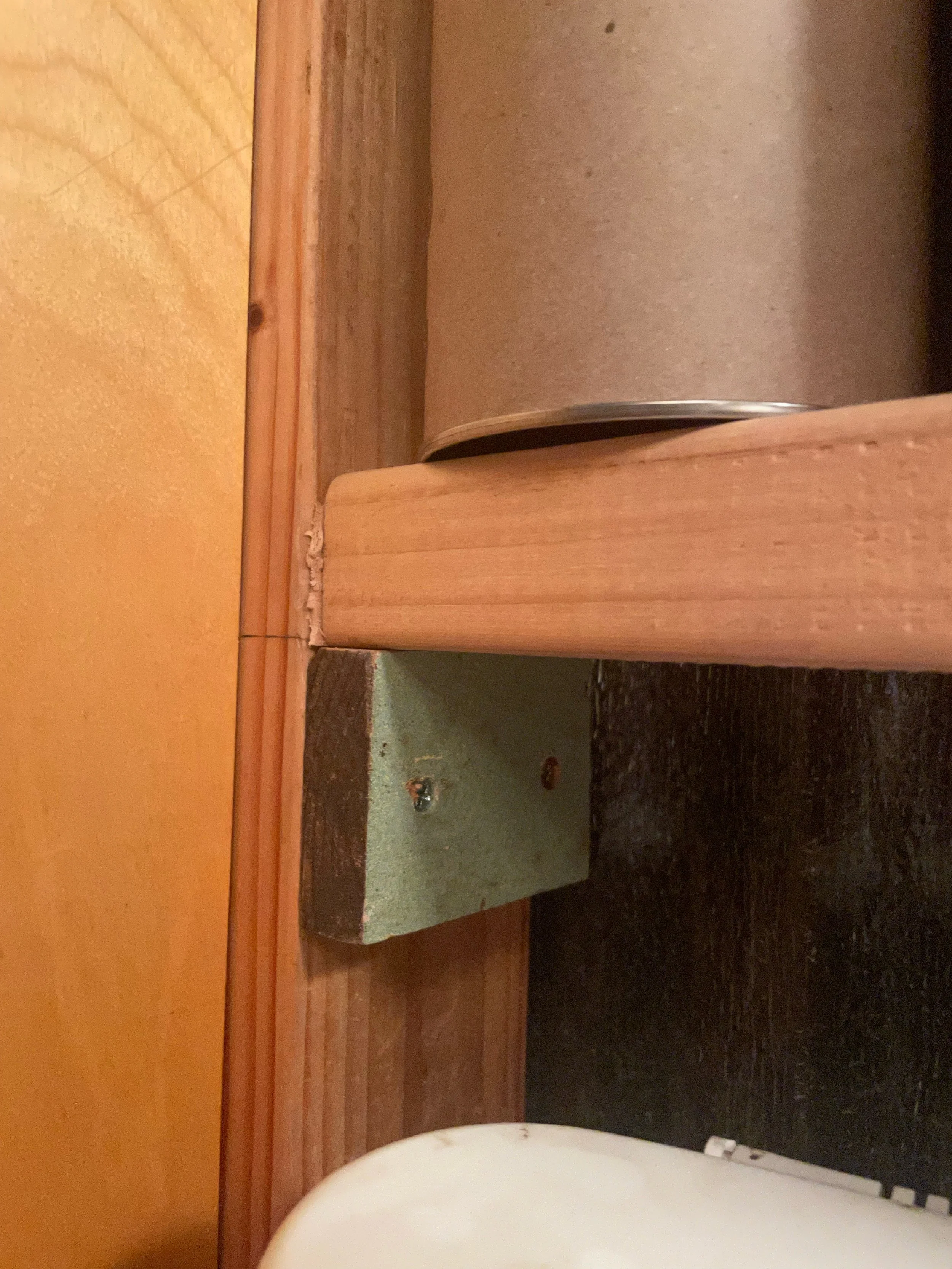Chuck’s Scraps (2021)
Installation in Chewing Fat show at Kristina Kite Gallery curated by Nancy Lupo.
The work consists of a pair of found homemade fluorescent lamps, two replicas I made, and a found box of scrap wood.
I found the homemade lamps and scrap wood box among a pile of old workshop materials in an alley in my neighborhood. I rummaged through the pile and took home some old tools, the two fluorescent lamps, and the box of scrap wood.
Once I brought the scrap wood box home I realized it too was made of scrap wood, sourced from some kind of old TV console, as evidenced by these circular cutouts for dials and the speaker mesh on bottom. Someone had gutted it of its electronics and inserted two drawers in the backside.
These two fluorescent lamps appeared to be homemade.
Blade sharpening block that has seen heavy use.
One of the tools had a name engraved on it, Chuck Hodgin. I googled the name and found his 2016 obituary in the local paper. He lived in my neighborhood for over 70 years, starting back when it was mostly housing for the nearby Douglas Aircraft Factory workers. He worked as a master mechanic at Douglas for 40 years, according to the obituary. This information gave the stuff more context. They were remnants from the home workshop of an aerospace mechanic.
I returned to the same spot in the alley often over the next few weeks. More stuff kept getting thrown out. Chuck’s family seemed to be clearing out his old stuff.
These old revolving screw organizers made out of old baby food jars and MDF mostly hold rivets (which made sense for an aircraft mechanic).
They put out a panel of old fiberglass, that was date-stamped 1953. I didn’t know exactly what I’d do with it, but it felt rare see plastic that old, especially since the stamp suggested it being manufactured for aircraft use.
I returned and grabbed a few more fiberglass panels that had been put out. These were translucent, unlike the first one I found.
I began cutting up Chuck’s scrap fiberglass and making lamps with it. The translucent fiberglass produced a nice glow-y filtered light.
I took a second look at the old lamps. They were handcrafted in ways I hadn’t appreciated at first. Their design was elegant and functional. They had clearly seen a lot of use. A friend looked at them and said that the type of fluorescent tube dates them back to the 40s or 50s. The red lettering printed on the sheet metal seemed quite specific, I wondered if it came from the Douglas Aircraft Factory.
I was looking at pictures of Douglas workers in the 1940s, and sure enough…
The red text on their sheet metal matched the sheet metal on Chuck’s lamps, meaning that Chuck had sourced his materials from the place he worked, the Douglas aircraft factory.
Douglas Aircraft closed its Santa Monica plant in 1975, and in the 1980s its massive footprint was redeveloped as the Santa Monica Business Park (SMBP) and Clover park. The business park now houses tech companies, namely Snapchat, and the neighborhood around it is housing for those workers. Despite my neighborhood’s origins as housing for the Douglas workers, I never learned about the plant in school, and I didn’t know anybody who had lived there long enough to have personal memories of it. So these lamps were a rare tangible artifact of my neighborhood’s industrial past.
My first idea was to replicate Chuck’s gesture today, by making my own homemade fluorescent lamps out of materials sourced from the same place Chuck’s materials were from, which is now SMBP. What would the physical waste materials of tech offices look like?
I began dumpster diving there, pulling mainly scraps of office building materials and office supplies, to make my own lamps.
I found some fluorescent lamp ballasts in the dumpsters, which was a huge boon to the project and made me feel like I was on the right track.
But looking at the materials I collected from the office park, I wasn’t feeling inspired. The materials were ugly, which was sort of the point, but I didn’t feel motivated to make something that was ugly.
I began engraving an aerial map of the SMBP with the SM Airport onto the top of Chuck’s scrap wood box.
I turned my attention back to Chuck’s scrap wood.
Some scraps are interesting shapes, interesting colors.
Some have interesting patterns
Some index certain tools.
Some are so small it’s surprising he saved them.
All of them index some woodworking project from long ago, via the excess, the offcuts. And what is important about them is that he still saw potential in each piece. Each small scrap of wood still had some life left in them, he saw, enough to not be discarded as waste. But he died before he was able to realize the potential of each piece. My idea was to eventually use every piece of scrap wood.
So far I’ve used them in small applications, like this drawer pull, and a shelf bracket.
These things attract me because they allow me access to people who are not there for me to meet. It’s meeting or, more often, conjuring someone, based on their things. But things that were unimportant to their family that i intercept as they’re being thrown away. Dealing with the fat of their legacy, not the meat of it, what can I find? And then handling their materials as a way to honor them or fulfill the potential in these things.
After feeling uninspired by the SMBP scrap materials, I switched paths and decided to just replicate Chuck’s lamp design using his old scrap materials. Where he used sheet metal, I used his fiberglass. Where he used metal brackets, I cut mine out of his wood scraps.
Where he used materials I didn’t find in his scraps, I sourced mine from things I had lying around, like he probably did too. For example: the fluorescent lamp ballasts–I used the ones I found in the SMBP dumpsters.
Or the power switch–I used wall light switches I had lying around, while Chuck used toggle switches.







